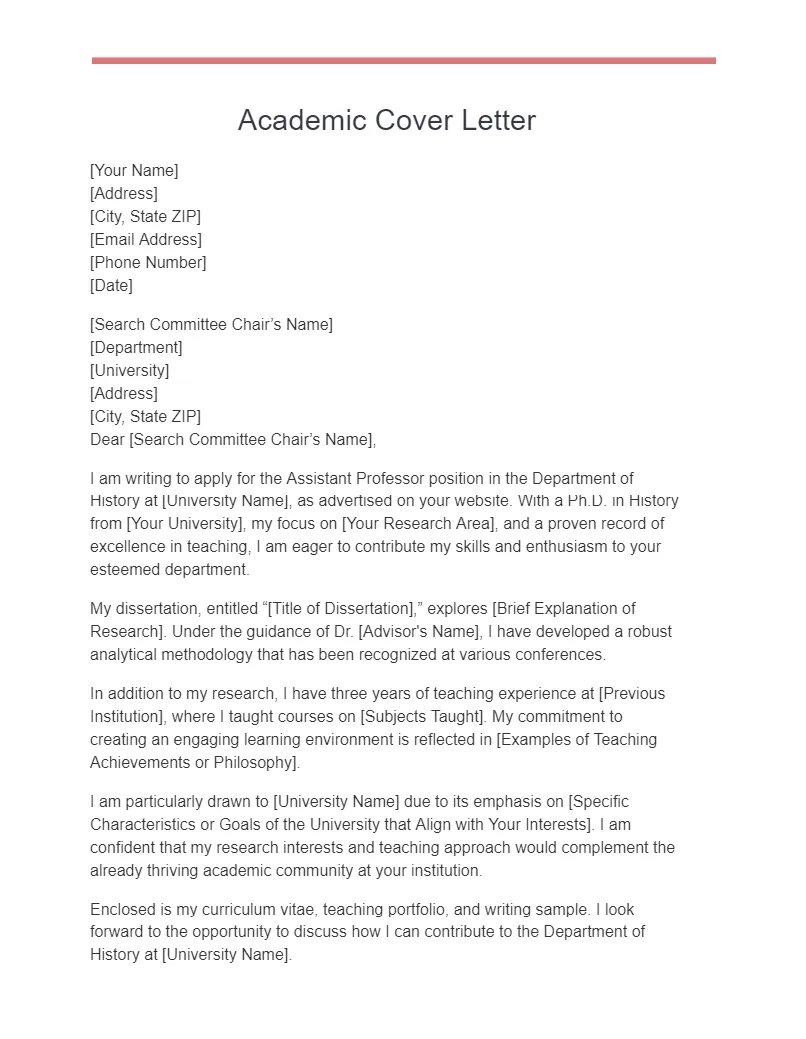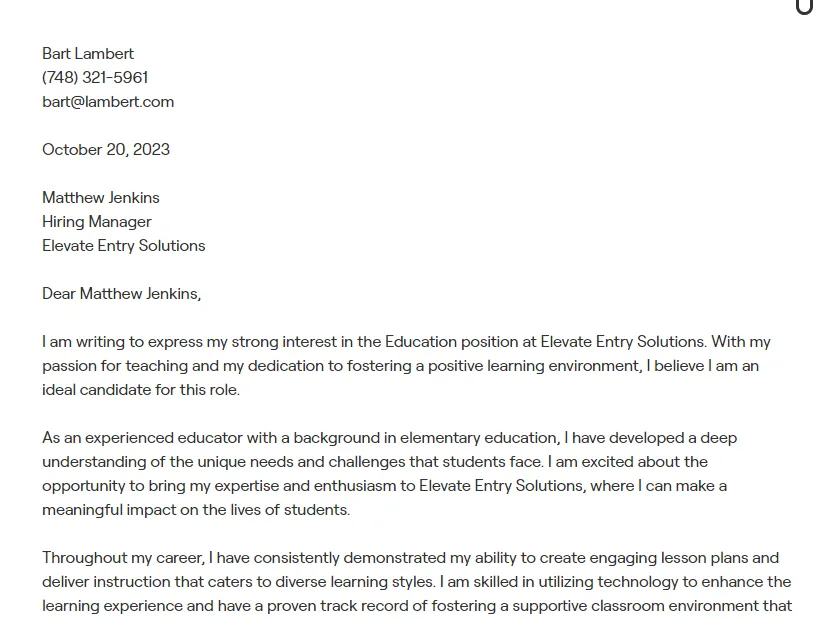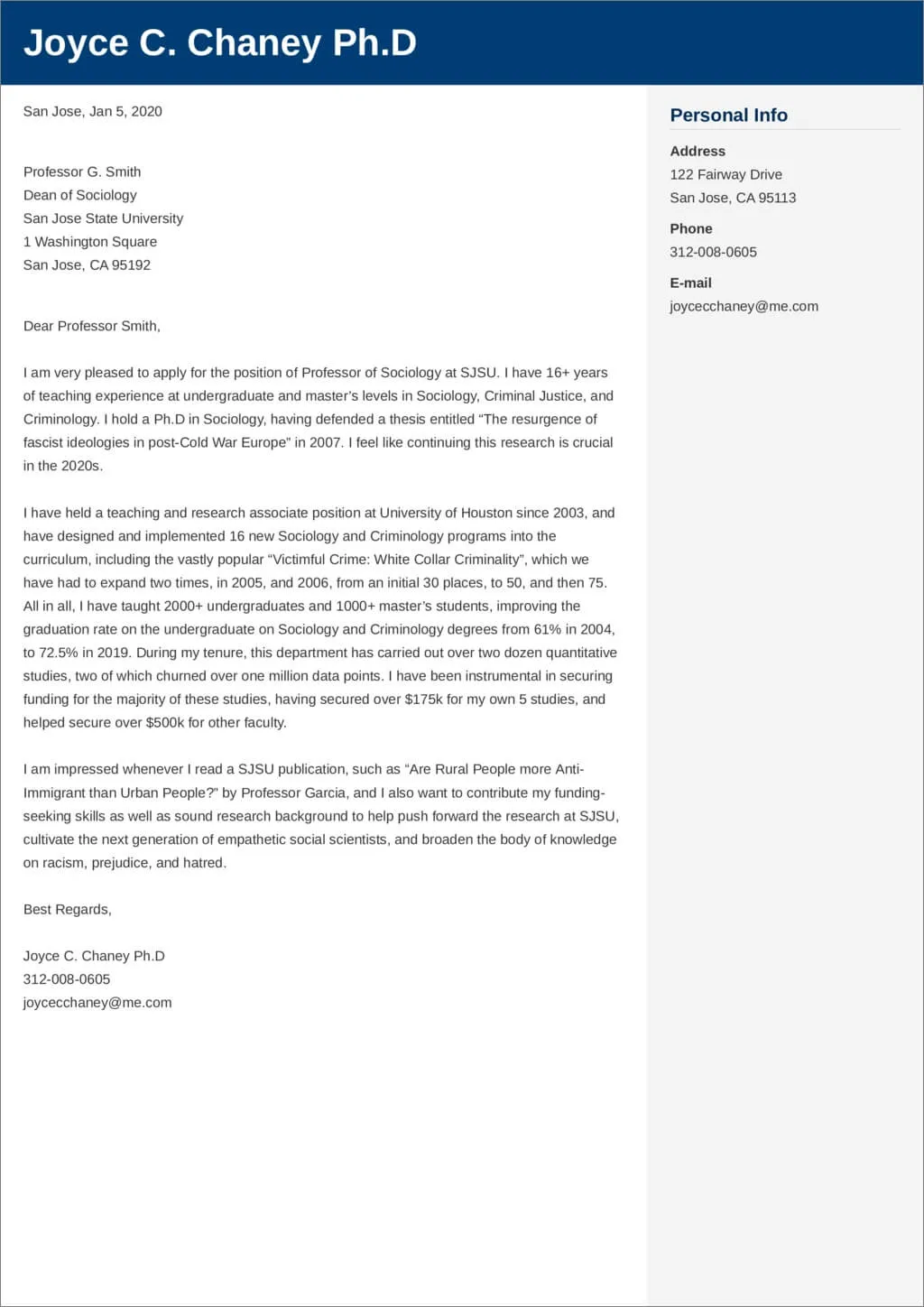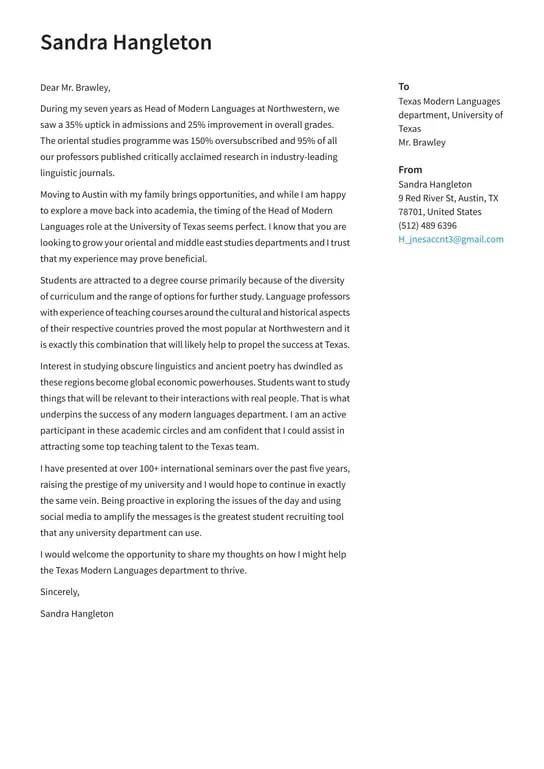Cover Letter: How To Make Yours Stand Out!
In today’s competitive job market, a well-crafted cover letter is more than just a formality; it’s your first opportunity to make a lasting impression on potential employers. It is your chance to showcase your personality, enthusiasm, and how your skills align with the specific role and institution you are targeting. A generic cover letter might get lost in the shuffle, but one that is thoughtfully tailored, highlighting your unique value proposition, can significantly increase your chances of securing an interview. This guide will provide you with actionable strategies and tips to make your cover letter stand out from the crowd, ensuring it captures the attention of hiring managers and helps you land your dream job in the education sector.
Researching the Institution
Before you even begin writing, dedicate time to thoroughly research the institution you are applying to. Visit the institution’s website, explore its mission statement, values, and recent news or publications. Understand the institution’s culture, its focus on research or teaching, and any specific initiatives it prioritizes. This research will not only demonstrate your genuine interest but also provide you with key insights to tailor your cover letter effectively. For example, if the institution emphasizes innovation, you can highlight your innovative teaching methods or research contributions. Showing that you’ve done your homework instantly sets you apart as a serious candidate.
Understanding the Role

Carefully analyze the job description, paying close attention to the required skills, qualifications, and responsibilities. Identify the keywords and phrases that the employer uses to describe the ideal candidate. This analysis is crucial for aligning your skills and experience with the role’s specific requirements. Consider what the hiring manager is really looking for, and tailor your cover letter to address those needs directly. Highlight your experience and achievements that directly relate to the job description, emphasizing your ability to meet the employer’s expectations. This targeted approach shows that you understand the position and are a perfect fit.
Highlighting Relevant Skills and Experience
Your cover letter should serve as a concise summary of your relevant skills and experience, showcasing how you meet the requirements of the role. Don’t simply list your qualifications; instead, provide specific examples of how you have applied those skills in previous roles. Use the STAR method (Situation, Task, Action, Result) to structure your responses. This helps you provide concrete examples of your accomplishments. Explain the situation, the task you were assigned, the actions you took, and the positive results you achieved. This method makes your cover letter more engaging and demonstrates your ability to deliver tangible outcomes.
Quantifying Achievements
Whenever possible, quantify your achievements with data and metrics. Numbers add credibility and demonstrate the impact of your work. Instead of saying “Improved student test scores,” say “Improved student test scores by 15% through implementation of a new teaching strategy.” Providing specific numbers gives the reader a clear understanding of your accomplishments and the value you brought to your previous roles. Metrics like these make your cover letter more compelling and show that you’re results-oriented. Use percentages, dollar amounts, or other measurable data to showcase your contributions.
Tailoring Your Cover Letter

One of the most common mistakes is sending out a generic cover letter. Take the time to tailor each cover letter to the specific job and institution. Demonstrate your understanding of the role and the institution’s needs. Use the research you conducted earlier to specifically address how your skills and experiences align with the institution’s mission and values. Refer to specific projects, initiatives, or goals that resonate with the job description. Personalizing your cover letter shows your genuine interest and that you are taking the application seriously. Avoid generic opening and closing statements and craft a narrative that is unique to each application.
Formatting and Presentation
The appearance of your cover letter is as important as its content. Ensure that your cover letter is well-formatted, easy to read, and free of errors. Use a professional font, such as Times New Roman or Arial, and maintain a consistent font size and spacing. Keep paragraphs concise and use bullet points to highlight key information or accomplishments. A well-formatted cover letter shows attention to detail and professionalism. Avoid overly complex formatting and ensure your cover letter looks clean and organized. A cluttered or poorly formatted cover letter can detract from your message.
The Importance of Proofreading
Proofreading is a critical step in ensuring your cover letter is polished and professional. Errors in grammar, spelling, or punctuation can significantly undermine your credibility. Proofread your cover letter multiple times, and ask a friend or colleague to review it as well. Fresh eyes can often catch mistakes that you might have missed. Read the cover letter aloud to help identify awkward phrasing or grammatical errors. Pay close attention to the details, as even minor errors can leave a negative impression. A perfect cover letter demonstrates your commitment to excellence.
Using Action Verbs

To make your cover letter more engaging and dynamic, start your sentences with strong action verbs. Action verbs such as “managed,” “developed,” “implemented,” “achieved,” “led,” and “created” bring your accomplishments to life and convey your abilities effectively. Use a variety of action verbs to avoid repetition and keep the reader engaged. These verbs highlight what you did in your previous roles and demonstrate your proactive approach to work. Action verbs make your cover letter sound more confident and professional.
Contact Information and Call to Action
Include your contact information prominently at the top of your cover letter, including your phone number, email address, and LinkedIn profile link, if applicable. This makes it easy for the hiring manager to contact you. End your cover letter with a clear call to action, such as expressing your enthusiasm for the opportunity and stating your availability for an interview. Thank the hiring manager for their time and consideration. A strong call to action encourages the hiring manager to take the next step and demonstrates your proactive approach to the job search.
Following Up
Following up after submitting your cover letter shows initiative and your continued interest in the position. Send a polite email to the hiring manager or the contact person listed in the job description, usually one to two weeks after submitting your application. In your follow-up, briefly reiterate your interest in the role, mention something specific that you discussed in your cover letter, and thank them again for their time. This demonstrates your commitment and can help you stay top of mind. Avoid being overly persistent, but a well-timed follow-up can make a positive impression.
Crafting a compelling cover letter is an essential step in any job application process, particularly in the education sector. By following the guidelines above, you can make your cover letter shine, capture the attention of hiring managers, and increase your chances of landing an interview. Good luck with your job search!
